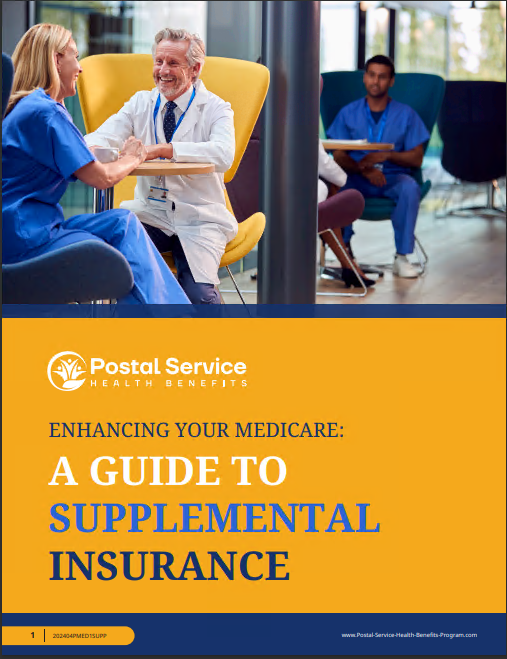Key Takeaways
- Postal retirees must align their Medicare and Postal Service Health Benefits (PSHB) to maintain comprehensive health coverage in retirement.
- Understanding important Medicare and PSHB enrollment periods, particularly in 2024, is critical for avoiding coverage gaps and penalties.
PSHB and Medicare: How Postal Retirees Can Make Sure They’re Covered as They Enter Retirement
When postal workers retire, ensuring continuous healthcare coverage is crucial. Many retirees will transition from the Postal Service Health Benefits (PSHB) program to Medicare when they turn 65. However, without proper planning, this transition can lead to gaps in coverage or unexpected healthcare costs. By understanding how PSHB and Medicare interact, retirees can safeguard their health and finances as they enter this new phase of life.
Overview of PSHB
The Postal Service Health Benefits (PSHB) program provides health coverage for postal employees and retirees. It operates similarly to the Federal Employees Health Benefits (FEHB) program but is specifically tailored to meet the needs of postal workers. The program covers a wide array of services, including hospital care, outpatient services, preventive care, and prescription drugs.
For postal employees, PSHB continues to offer coverage after retirement. However, as retirees become eligible for Medicare, their healthcare coverage may change. Medicare will often serve as the primary payer, while PSHB becomes secondary. This shift requires careful coordination to ensure continuous coverage and avoid unnecessary costs.
Understanding Medicare
Medicare is the federal health insurance program for individuals 65 and older and those with certain disabilities. The program is divided into four parts:
- Medicare Part A: Covers inpatient hospital care, skilled nursing facility care, hospice, and some home healthcare services. Most individuals do not have to pay a premium for Part A if they or their spouse have worked and paid Medicare taxes for at least 10 years.
- Medicare Part B: Covers outpatient services such as doctor visits, preventive care, lab tests, and durable medical equipment. Unlike Part A, Part B requires a monthly premium, and enrollment is not automatic for everyone.
- Medicare Part C (Medicare Advantage): A private insurance alternative to Original Medicare that combines Parts A and B and often includes additional benefits like dental, vision, and prescription drug coverage.
- Medicare Part D: Covers prescription drugs. Some retirees may need to enroll in a separate Part D plan, while others may have drug coverage included in their PSHB plan.
Postal retirees must consider how each of these Medicare parts interacts with PSHB to optimize their healthcare benefits.
Coordinating PSHB with Medicare
Once a retiree becomes eligible for Medicare, the two programs work together to provide comprehensive health coverage. In most cases, Medicare becomes the primary payer, and PSHB acts as secondary insurance. This means that Medicare will pay first for covered services, and PSHB will help cover the remaining costs, such as copayments, deductibles, and coinsurance.
Hospital Coverage (Medicare Part A and PSHB)
For inpatient hospital stays, Medicare Part A provides coverage for most of the costs, including hospital rooms, nursing care, and some medical supplies. PSHB helps cover out-of-pocket expenses, such as deductibles and coinsurance. This coordination reduces the financial burden on retirees when they require hospital care.
Outpatient Services (Medicare Part B and PSHB)
Medicare Part B covers 80% of approved outpatient services, such as doctor visits, lab tests, and medical equipment, after the Part B deductible is met. PSHB acts as a secondary payer, covering the remaining 20%, along with other services that may not be fully covered by Medicare.
Prescription Drugs (Medicare Part D and PSHB)
If a retiree’s PSHB plan includes prescription drug coverage, they may not need to enroll in a separate Medicare Part D plan. However, it’s essential to review the plan’s benefits to ensure there is no duplication of coverage, which could result in unnecessary premiums. If a retiree does not have drug coverage through PSHB, enrolling in Medicare Part D will be necessary to avoid gaps in prescription drug benefits.
Enrollment Deadlines: Key Dates to Remember
Enrolling in Medicare at the right time is critical for postal retirees to avoid late enrollment penalties and gaps in coverage. Several important dates must be noted:
Initial Enrollment Period (IEP)
The Initial Enrollment Period (IEP) for Medicare starts three months before a retiree turns 65 and ends three months after the birthday month, for a total of seven months. During this period, retirees should enroll in Medicare Parts A and B to ensure timely coverage. If they miss this window, they may face penalties that increase their Part B premiums for life.
Special Enrollment Period (SEP) for PSHB
A Special Enrollment Period (SEP) is available to postal retirees who were eligible for Medicare Part A as of January 1, 2024, but had not yet enrolled in Medicare Part B. This SEP runs from April 1, 2024, to September 30, 2024. During this period, retirees can enroll in Medicare Part B without incurring late enrollment penalties. Enrolling during this SEP ensures that retirees will have both Medicare and PSHB coverage starting on January 1, 2025.
It’s essential to submit all required forms, including the CMS-40B form and the notification letter received from PSHB, by September 30, 2024, to avoid any delays or penalties. Missing this deadline can lead to gaps in coverage and higher healthcare costs.
General Enrollment Period (GEP)
If a retiree misses both the IEP and SEP, they can enroll in Medicare during the General Enrollment Period (GEP), which runs from January 1 to March 31 each year. However, coverage will not begin until July 1, and the retiree may face higher premiums due to late enrollment penalties.
Benefits of Coordinating Medicare and PSHB
By coordinating Medicare and PSHB, postal retirees can enjoy several key benefits, including lower out-of-pocket costs, expanded coverage options, and access to a broader network of healthcare providers. Here are some of the advantages of ensuring these two programs work together:
Lower Out-of-Pocket Costs
Because Medicare covers most of the primary expenses for hospital stays and outpatient care, PSHB acts as supplemental coverage. This means retirees pay less out-of-pocket for healthcare services, as PSHB covers many of the costs that Medicare does not, such as copayments, coinsurance, and deductibles.
Comprehensive Coverage
PSHB often provides additional services that Medicare may not cover, such as dental, vision, or hearing benefits. By maintaining both Medicare and PSHB, retirees can ensure they have comprehensive coverage that meets all of their healthcare needs.
Flexibility and Access to Providers
When Medicare and PSHB work together, retirees have access to a larger network of healthcare providers. This flexibility allows them to choose doctors and specialists who accept Medicare while also taking advantage of PSHB’s additional benefits and network.
What Happens If Retirees Fail to Enroll in Medicare?
Failure to enroll in Medicare when eligible can have serious financial consequences for postal retirees. If a retiree is eligible for Medicare but does not enroll, PSHB may significantly reduce its coverage, assuming that Medicare will act as the primary payer. In such cases, retirees could face much higher out-of-pocket costs for services that would otherwise be covered by Medicare.
Additionally, retirees who miss their IEP or SEP and delay Medicare enrollment could face lifelong penalties. These penalties increase the cost of Medicare Part B premiums by 10% for each 12-month period that enrollment was delayed.
How Medicare Advantage Fits In
Medicare Advantage (Part C) is an alternative to Original Medicare that offers combined Part A and Part B coverage and may include additional benefits such as dental, vision, and hearing care. Some Medicare Advantage plans also include prescription drug coverage.
Postal retirees considering Medicare Advantage should carefully evaluate how these plans coordinate with their PSHB benefits. While Medicare Advantage plans often provide more comprehensive benefits, retirees must ensure that they do not duplicate coverage offered by PSHB. In some cases, staying with Original Medicare and PSHB may be more cost-effective, depending on the retiree’s healthcare needs and preferences.
Taking Action: How Retirees Can Prepare
As postal retirees approach Medicare eligibility, it’s essential to take proactive steps to ensure smooth enrollment and coordination with PSHB. Here’s a checklist for retirees:
- Review Health Benefits: Start reviewing your current PSHB plan and compare it to Medicare options well before your 65th birthday.
- Enroll in Medicare on Time: Take advantage of the Initial Enrollment Period to sign up for Medicare Parts A and B. If eligible, use the Special Enrollment Period to avoid penalties.
- Submit Required Paperwork: Ensure all forms, including the CMS-40B form and any PSHB notification letters, are submitted by the required deadlines.
- Attend Educational Seminars: The USPS Benefits and Wellness team offers informational sessions on PSHB and Medicare. These seminars can provide valuable insights and help retirees make informed decisions about their healthcare coverage.
- Check Prescription Drug Coverage: Determine if your PSHB plan includes adequate prescription drug coverage or if you need to enroll in Medicare Part D.
Final Thoughts: Ensuring Seamless Coverage in Retirement
Navigating the transition from PSHB to Medicare can seem complex, but with the right planning and attention to deadlines, postal retirees can ensure they remain covered without interruptions. By coordinating Medicare and PSHB, retirees will have access to comprehensive healthcare benefits, reduced out-of-pocket costs, and a broad network of providers. As the Special Enrollment Period approaches, taking action will secure healthcare coverage as retirees enter the next stage of life.
Contact Information:
Email: [email protected]
Phone: 8065556789






